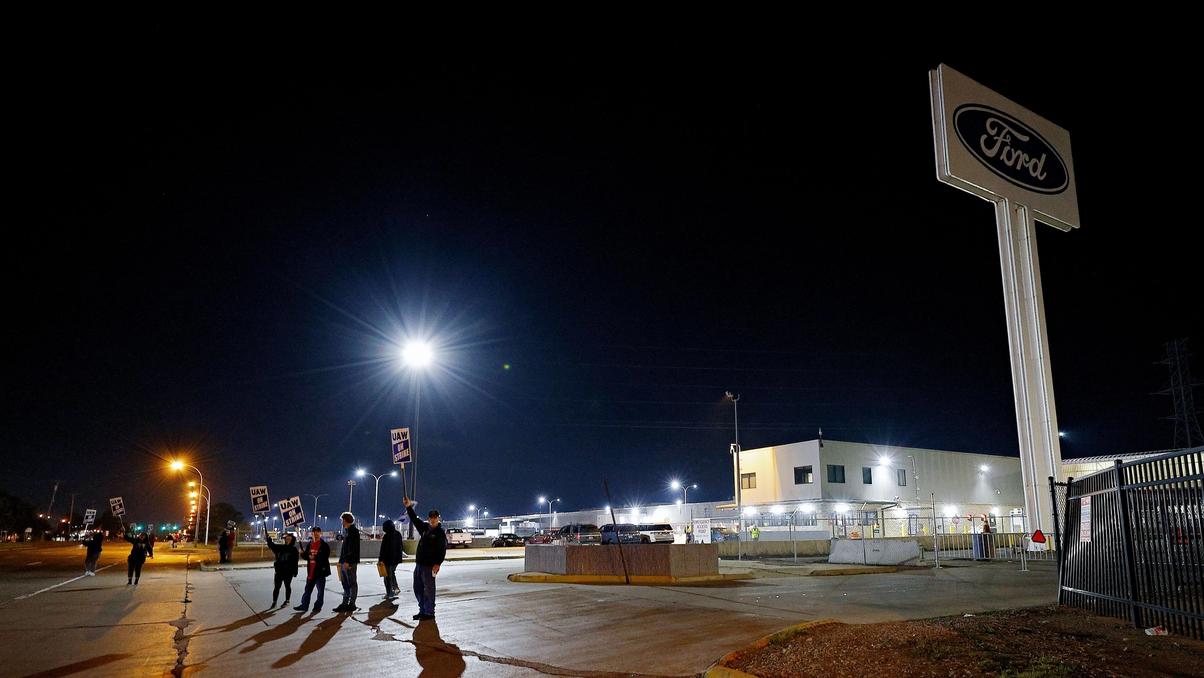Where Auto Industry Negotiations Stand As Strike Enters Week Four
There's been some progress but both sides have more work to do. Shutterstock
Shutterstock
News that is entertaining to read
Subscribe for free to get more stories like this directly to your inboxNearly a month ago, autoworkers at the Big Three U.S. automakers walked out in pursuit of higher wages and a handful of workplace improvements. While there’s no immediate end in sight, there is some faint evidence of progress in the ongoing negotiations.
Unprecedented action
This year has been particularly busy for labor unions with strikes and demands impacting Hollywood and various sectors of the economy. But when autoworkers hit the picket lines last month, it was particularly noteworthy because it was the first time in the United Auto Workers’ nearly nine-decade history that all three companies (Ford, General Motors, and Chrysler owner Stellantis) were hit by strikes at the same time.
Union boss Shawn Fain has indicated a willingness to call for even wider walkouts, but a GM factory in Texas that manufactures SUVs avoided a strike at the last minute this week by granting some significant concessions.
Nevertheless, there are roughly 25,000 workers picketing as of this writing, and the Big Three companies are working hard to find an end to the stalemate.
The major sticking points
Autoworkers believe they are entitled to higher salaries in part because corporate executives have seen their income skyrocket in recent years without a corresponding bump in the pay of ordinary workers.
And in an uncertain economic climate, the UAW insists that union members need certain guarantees, including:
- Wage increases
- Better retirement benefits
- A 32-hour workweek
There’s also a major debate over whether plans to invest in battery plants in the U.S. will result in unionized jobs. An ongoing shift to electric vehicles has caused concerns about the future of the industry.
It’s a lot to consider it remains to be seen when and where the two sides will find enough common ground to get back to work.
 Why Is The Aging Voyager 1 Probe Sending Back Incoherent Communications?
It's been speaking gibberish for a few months and officials are concerned.
Why Is The Aging Voyager 1 Probe Sending Back Incoherent Communications?
It's been speaking gibberish for a few months and officials are concerned. One Woman’s Massive Donation Is Wiping Out Tuition At This Medical School
Her inheritance came with the instruction to do "whatever you think is right."
One Woman’s Massive Donation Is Wiping Out Tuition At This Medical School
Her inheritance came with the instruction to do "whatever you think is right." Woman’s Pets Will Inherit Her Multimillion-Dollar Fortune, Not Her Kids
It's not the first time four-legged heirs were named in a will.
Woman’s Pets Will Inherit Her Multimillion-Dollar Fortune, Not Her Kids
It's not the first time four-legged heirs were named in a will.